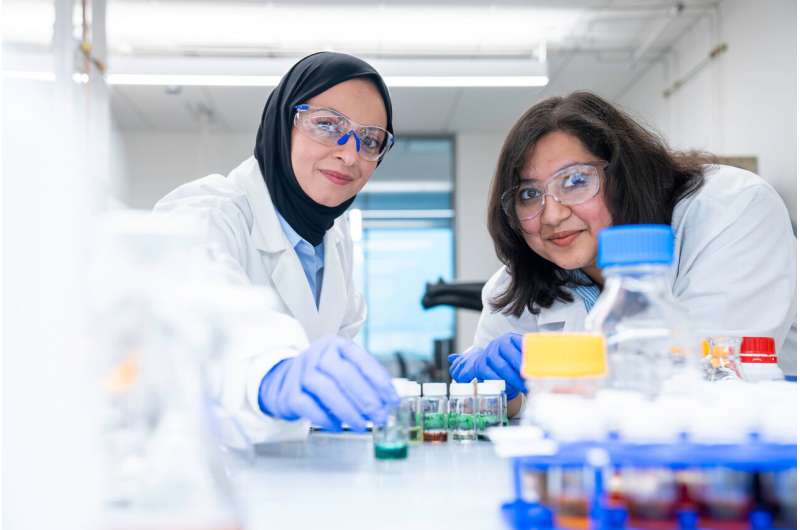
July 29, 2024 by Silvia Cernea Clark, Rice University
Collected at: https://techxplore.com/news/2024-07-scientists-faster-cleaner-lithium-battery.html
The “white gold” of clean energy, lithium is a key ingredient in batteries large and small, from those powering phones and laptops to grid-scale energy storage systems.
Though relatively abundant, the silvery-white metal could soon be in short supply due to a complex sourcing landscape impacted by the electric vehicle (EV) boom, net-zero goals and geopolitical factors. Valued at over $65 billion in 2023, the lithium-ion battery (LIB) global market is expected to grow by over 23% in the next eight years, likely heightening existing challenges in lithium supply.
What’s more, recovering lithium from spent batteries is environmentally taxing and highly inefficient ⎯ something a team of Rice University researchers led by Pulickel Ajayan is working to change.
In their latest study published in Advanced Functional Materials, the researchers describe a rapid, efficient and environmentally friendly method for selective lithium recovery using microwave radiation and a readily biodegradable solvent. Findings show the new process can retrieve as much as 50% of the lithium in spent LIB cathodes in as little as 30 seconds, overcoming a significant bottleneck in LIB recycling technology.
“We’ve seen a colossal growth in LIB use in recent years, which inevitably raises concerns as to the availability of critical metals like lithium, cobalt and nickel that are used in the cathodes,” said Sohini Bhattacharyya, one of the two lead authors on the study and a Rice Academy Postdoctoral Fellow in the Nanomaterials Laboratory run by Ajayan. “It’s therefore really important to recycle spent LIBs to recover these metals.”
Conventional recycling methods often involve harsh acids, while alternative eco-friendly solvents like deep eutectic solvents (DESs) have struggled with efficiency and economic viability. Moreover, current recycling methods recover less than 5% of lithium, largely due to contamination and loss during the process as well as the energy intensive nature of recovery.
“The recovery rate is so low because lithium is usually precipitated last after all other metals, so our goal was to figure out how we can target lithium specifically,” said Salma Alhashim, a Rice doctoral alumna who is the study’s other lead author.

“Here we used a DES that is a mixture of choline chloride and ethylene glycol, knowing from our previous work that during leaching in this DES, lithium gets surrounded by chloride ions from the choline chloride and is leached out into solution.”
In order to leach other metals like cobalt or nickel, both the choline chloride and the ethylene glycol have to be involved in the process. Knowing that of the two substances only choline chloride is good at absorbing microwaves, the researchers submerged the battery waste material in the solvent and blasted it with microwave radiation.
“This allowed us to leach lithium selectively over other metals,” Bhattacharyya said. “Using microwave radiation for this process is akin to how a kitchen microwave heats food quickly. The energy is transferred directly to the molecules, making the reaction occur much faster than conventional heating methods.”
Compared to conventional heating methods like an oil bath, microwave-assisted heating can achieve similar efficiencies almost 100 times faster. For example, using the microwave-based process, the team found that it took 15 minutes to leach 87% of the lithium as opposed to the 12 hours needed to obtain the same recovery rate via oil bath heating.
“This also shows that selectivity towards specific elements can be achieved simply by tuning the DES composition,” Alhashim said. “Another advantage is solvent stability: Because the oil bath method takes so much longer, the solvent begins to decompose, whereas this does not happen with the short heating cycles of a microwave.”
This breakthrough method could dramatically improve the economic and environmental impact of LIB recycling, providing a sustainable solution to a growing global issue.
“This method not only enhances the recovery rate but also minimizes environmental impact, which makes it a promising step toward deploying DES-based recycling systems at scale for selective metal recovery,” said Ajayan, the corresponding author on the study and Rice’s Benjamin M. and Mary Greenwood Anderson Professor of Engineering and professor and department chair of materials science and nanoengineering.
More information: Salma H. Alhashim et al, Microwave Assisted Ultrafast, Selective Lithium Extraction in Deep Eutectic Solvent for LIB Cathode Recycling, Advanced Functional Materials (2024). DOI: 10.1002/adfm.202404570
Journal information: Advanced Functional Materials

Leave a Reply